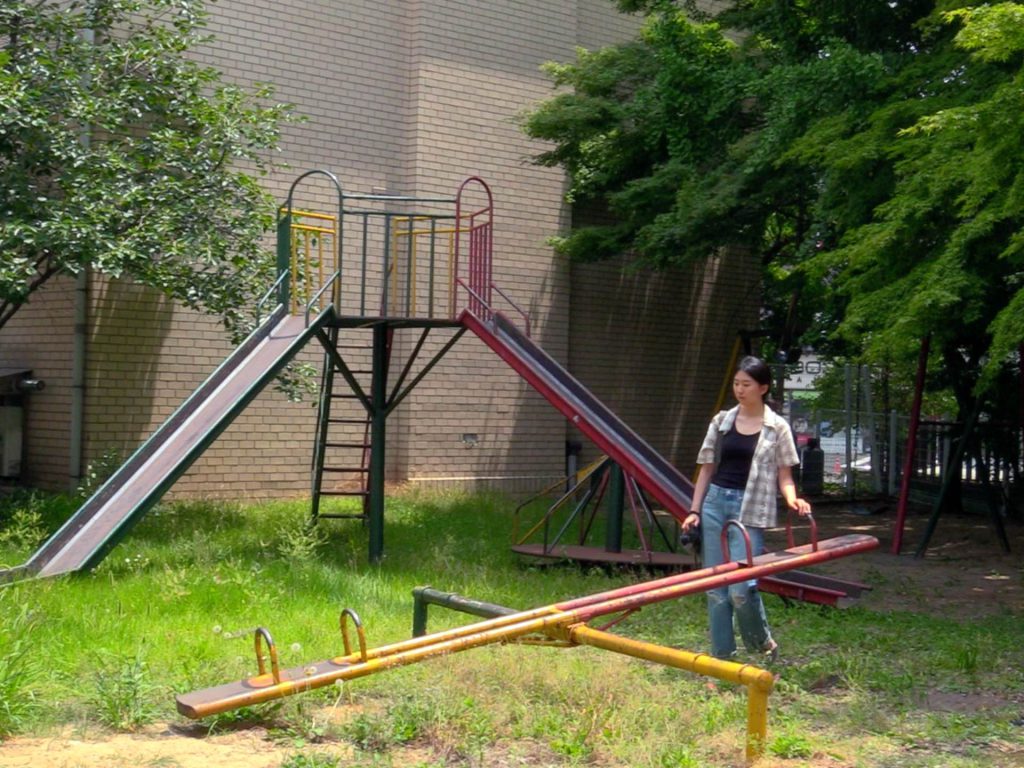
Christopher M. Cabrera
There are few times when we can quietly stop to appreciate our surroundings. Sohn Koo-Yong’s latest film is an opportunity to rethink the world around us, pointing out the sublime in even the most quiet of settings. Departing from the cold, monochrome, and alienating urban expanse of the city that featured in his YIDFF 2019 offering, Winter in Seoul, the director turns his camera to the warmer and more vibrant space of a rural town not far from the mountains, stopping to observe the finest details of the picturesque streets sprawling with greenery and a nostalgic charm. Sohn continues to develop his filmic language in Afternoon Landscape, experimenting further with cinema’s marriage of images, words, and sounds. This time, he has kept only a sliver of plot to give the audience a more immersive experience in the environment of his film, an exercise that has implications both for his filmic world and for the real world that he captures with his lens.
We find ourselves deeply invested in the landscape through the filmic style, which focuses on picturesque scenes of the everyday that resemble the most intricate of landscape paintings. The camera frames these spaces around town with wide shots, taking in an expansive space that often dwarfs the people who enter the frame, and with deep focus that avoids highlighting a particular focal point. Immersive not just in its presentation of space, Afternoon Landscape also creates a meditative and immersive atmosphere through time: long takes with a stationary camera that focus on a single spot long enough to feel like we are part of the scenery. Although we usually see residents going about their daily chores, passing time, or preparing for work, we also watch a nameless girl holding a camera, whom the film does not so much follow as encounter during its journey. She rests on some steps, approaches a pool of fresh water, and, of course, snaps the shutter of the camera from time to time. Sohn does not simply observe, however, but excels in composing his shots in a way that he creates beauty in this town that seems to be stuck in time. His obsession with capturing the amount of nature that still flourishes in the town is evident in shots lush with vibrant greens that juxtapose with the architecture in the small town.
But the implications of this immersive experience are multiple, and perhaps the most important is the way that it locates Sohn as a filmmaker in the documentary tradition. While his previous short films have had loose links to the documentary genre, the focus on less narrative and more observation gives the scenes in Afternoon Landscape a dual role: they support the diegetic world and record the spaces of the town in this particular moment in time. It is the latter function I want to turn my focus toward, because I think that Sohn makes an interesting statement about how documenting is not simply observation and that aesthetics do not function solely for the viewer’s enjoyment. His film plays an active role in contributing to a documenting of a place and a time, capturing not just scenic views of the everyday but the aging residents of the town as they go about mundane tasks in their daily lives. The deep focus erodes a focus on character and has the effect of integrating the townsfolk into their environment, itself serving as a telling document of space and the heterogeneous elements that comprise it.
This may even be an urgent concern for the places we see in the film, although we are not certain. Do the construction workers, hauling equipment in the middle of a hot summer day, draw attention to development (or demolition) projects in the area? What are we to think of the giant wall of ivy in the background, that dominates this scene and seems on the verge of engulfing the men? Or maybe we can look at the older women toward the end of the film who seem to watch the city in the distance, foreshadowing urban development’s eventual encroaching on the very area where they are sitting. Or even the absence of nature as we begin to move closer to the nearby city, where the greenery that had populated the majority of shots up until that point begins to fade from the screen. Instead, we are left with flora that are much less natural: potted plants spilling out onto the concrete of urban streets instead of large foliage that towers overhead. But the ephemeral nature of the town is only subtle when implied, and the director seems less focused on directing our concerns to it than on creating a meditative experience where we can tour the town leisurely, just like the protagonist and her camera.
Further evoking a sense of nostalgia are pages of what looks like chalk drawings of the town as well as poems that serve as intertitles, sometimes interrupting the flow of these landscape shots. These might suggest that we are guided to the spaces by the director himself, who is traveling through a town of his own memories and wants to archive them as a personal project. But it is also likely that, like the girl with the camera, he is also simply an observer, who happened upon the places in the film by chance, capturing what he can with his camera.
As I see the town around me change drastically every day, with houses and buildings torn down and others put up at a rapid pace, I understand the motivation behind documenting the spaces of this film. Landscapes like these too often fade from memory without leaving behind a trace. Sohn seems to see the potential of cinema not just to capture moments but to preserve them.
![ドキュ山ライブ! [DOCU-YAMA LIVE!]](http://www.yidff-live.info/wp-content/themes/yidff-live_2017/images/header_sp_logo1.png)

